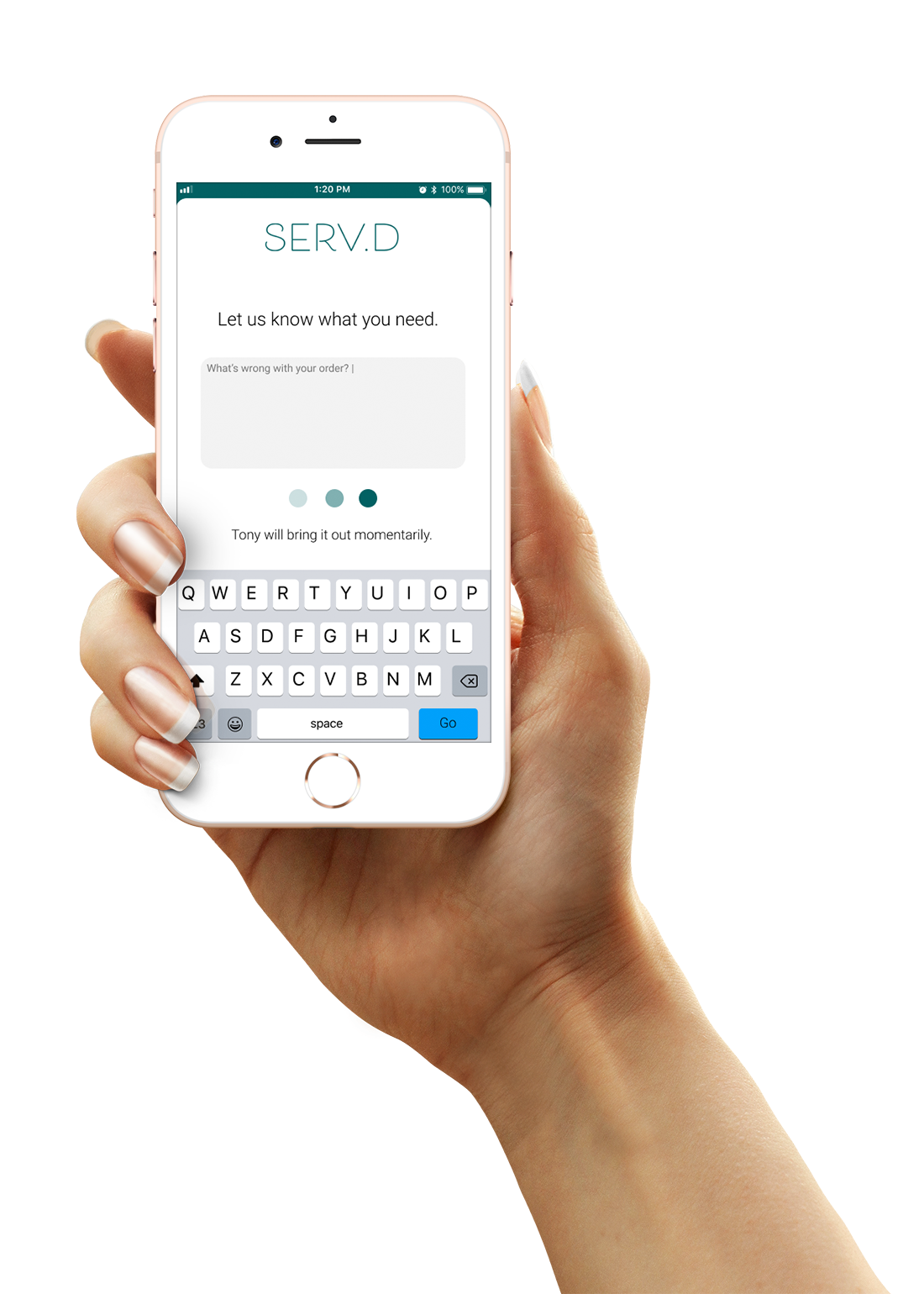We analyzed user complementary & conflicting needs and created a journey map for both diners and servers in pre-COVID dining experiences.
By identifying the interaction points between the two journeys, we determined which parts of the dining/serving process would be most important in our design, thus leading us to outline design criteria and problem statement.
Problem Statement
Our design targets servers and customers in upscale restaurants to implement the hospitality and service of dine-in in take out service.
We prototyped in wire-frames beginning with a basic workflow that would allow customers to originally choose dining in or carry out. Some user testing and research led us to only stick with the carryout version of the app where customers could browse the menu, talk with a server via audio call, visual call or chat, and then place their order.
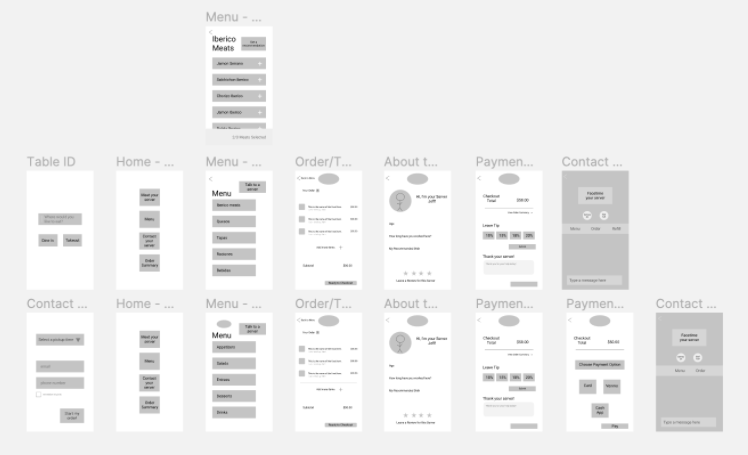
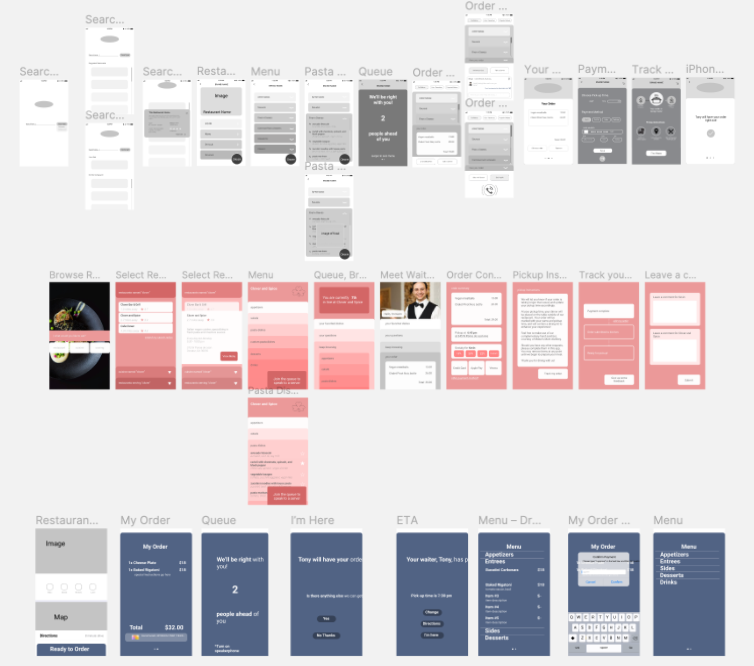
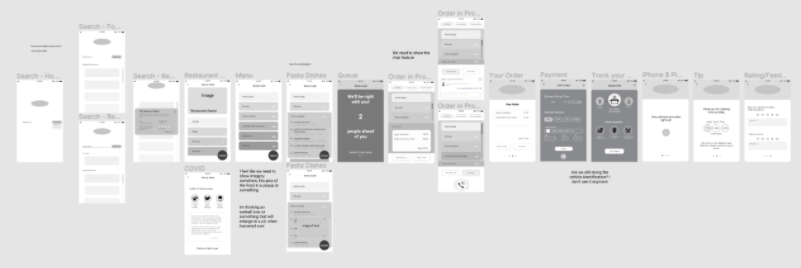
Feedback Validation
We tested our final Serv.d prototype by finding 12 participants who completed a self-guided app walk-through and follow-up survey based on the System Usability Scale. Serv.d received a score of an 85, classifying the prototype as near to “excellent”. We are conscious of some potential bias within these results.
In addition, the survey included questions about our design criteria that received very positive feedback.
"The ability to speak with a person to place your order is nice especially for customizations.”
"… more personalized and greater confidence that my order would be correct.”
"The experience was detailed but may be inconvenient if it becomes time consuming having to wait to place an order.”
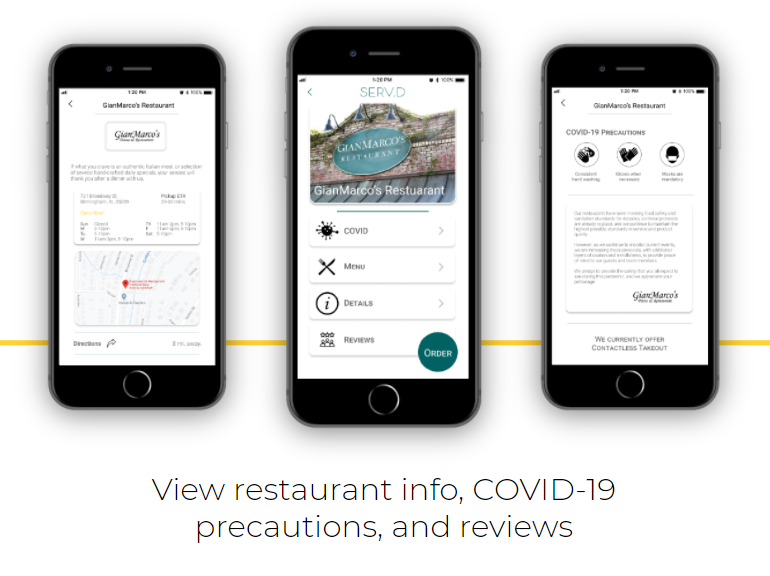


Browse the menu of your chosen restaurant; Join the queue via chat, audio or visual call
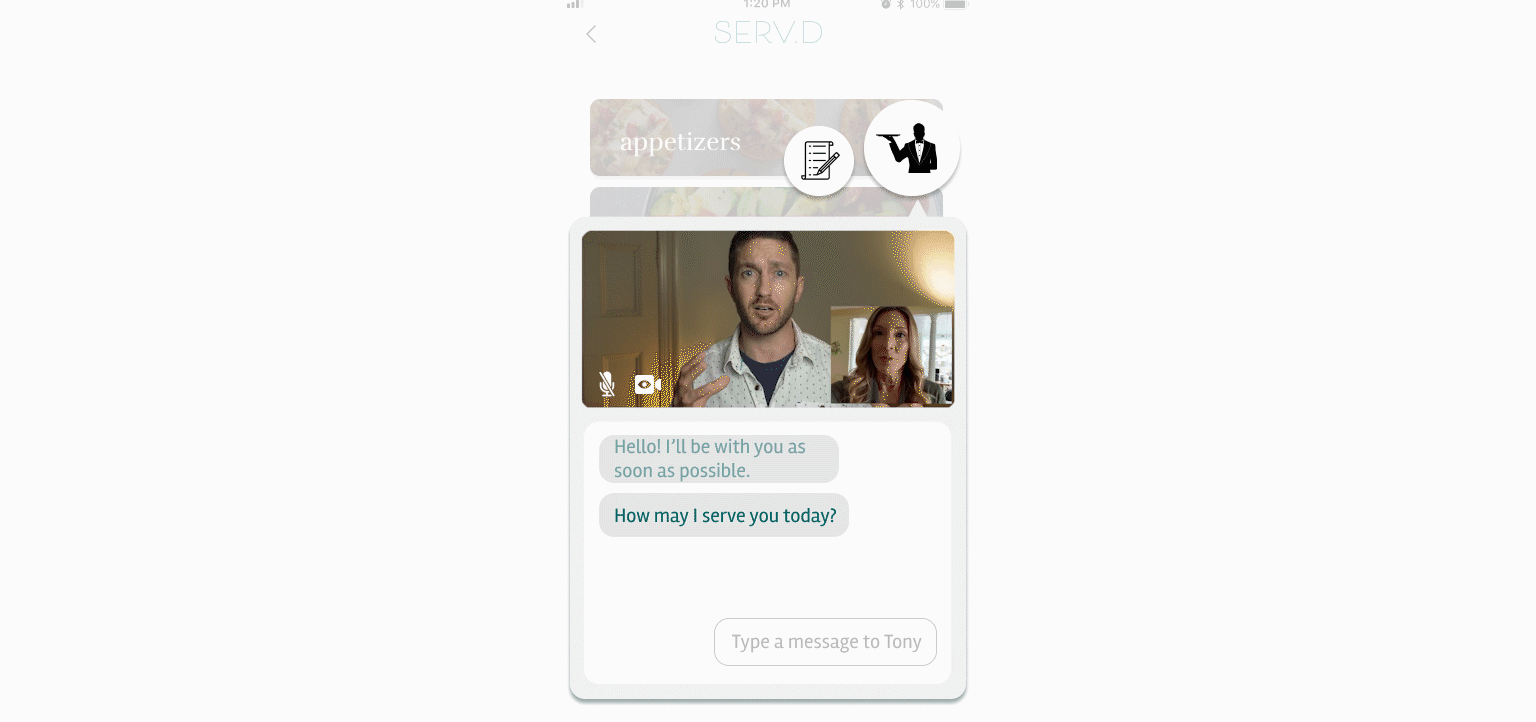
Speak to a server, customize your order, view updated cart
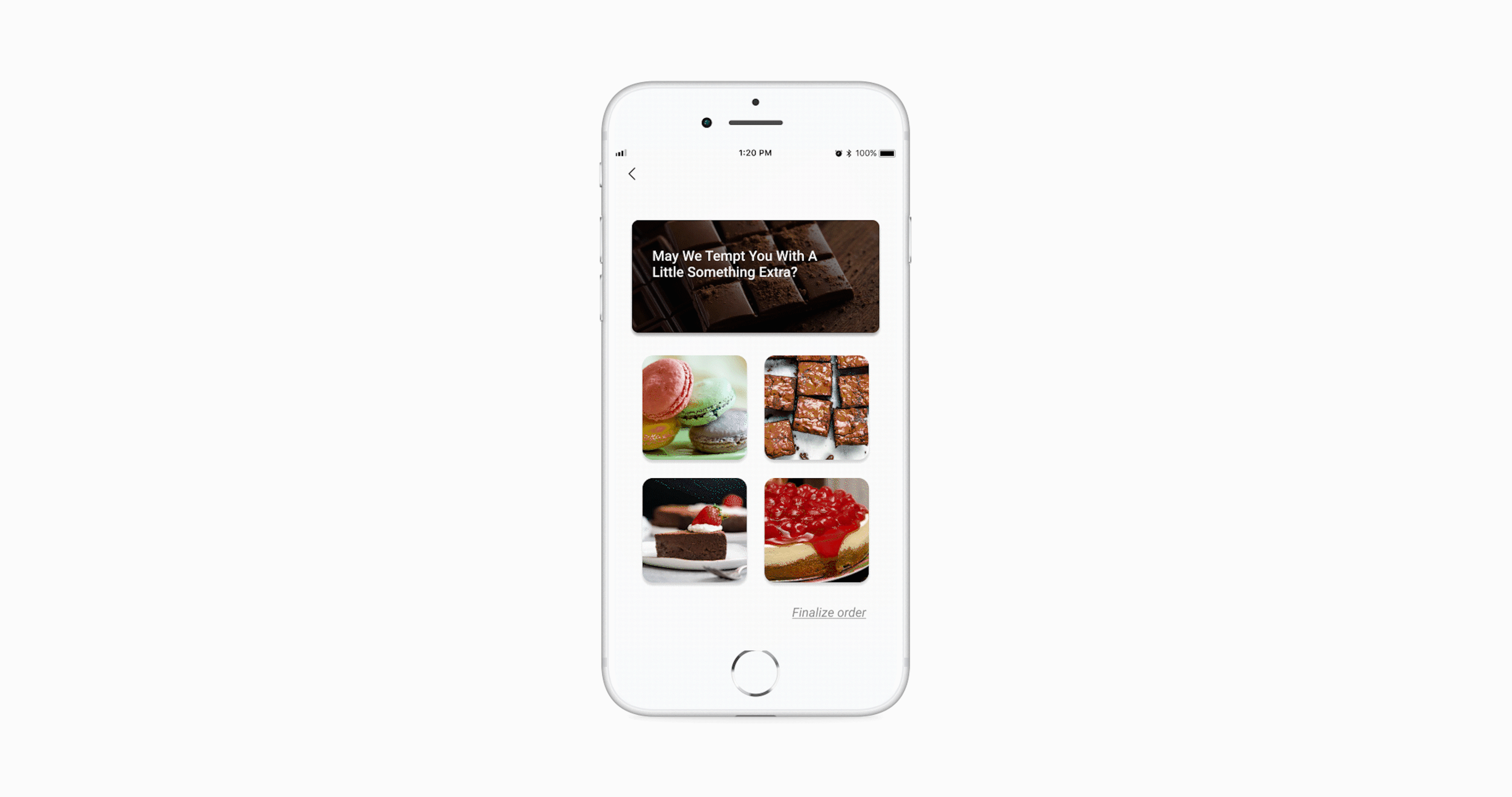
Add something tasty & Increase restaurant revenue
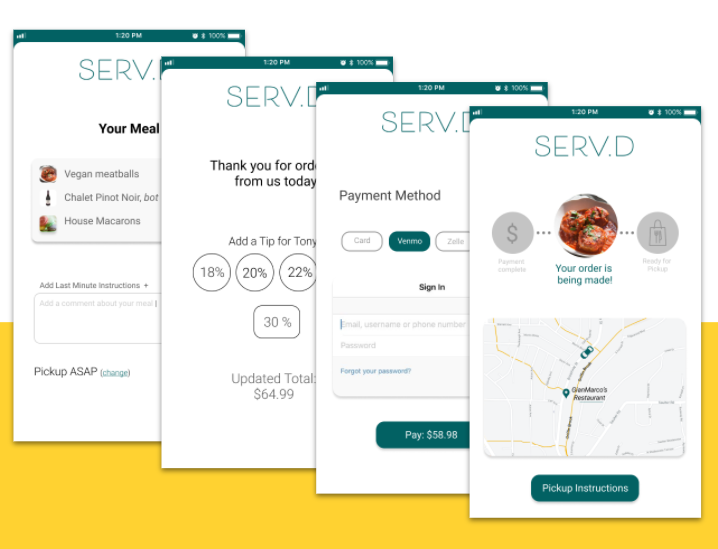
Once the customer has perused the dessert temptations and finalized their order, they move on to the payment and pickup portion of the process. They are shown their final cart, and given the opportunity to add any last-minute notes about their order. Then, they can add a tip for their server, pay using their card or a variety of online payment options such as venmo, view their order progress, pickup instructions, and a map that will track their journey to restaurant arrival.
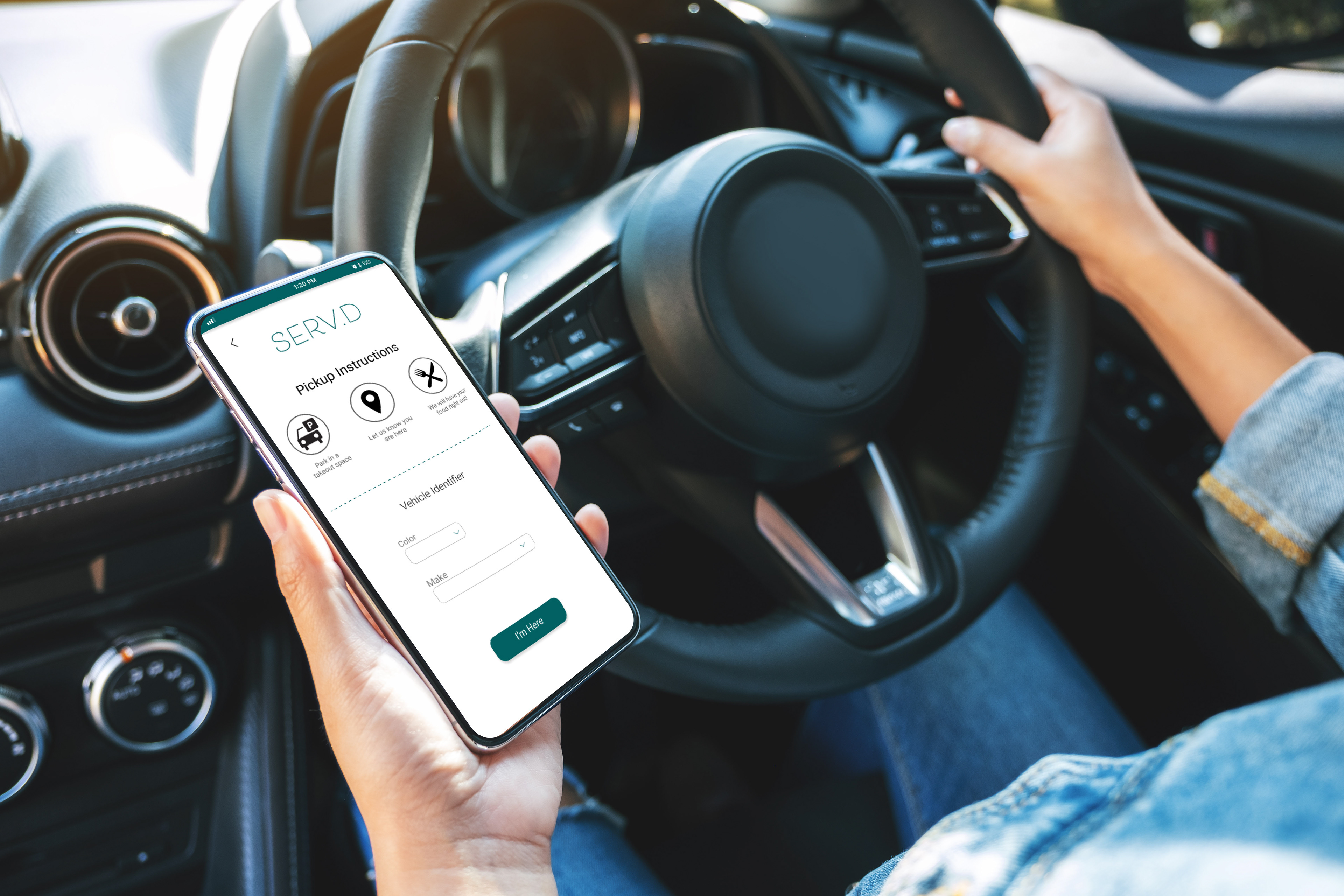

Serv.d can act as an emulator to run a restaurant’s point of sale system. With Apache Cordova, code can be reused across platforms to adapt this app for all iOS and android devices.

Integrated with any existing POS system
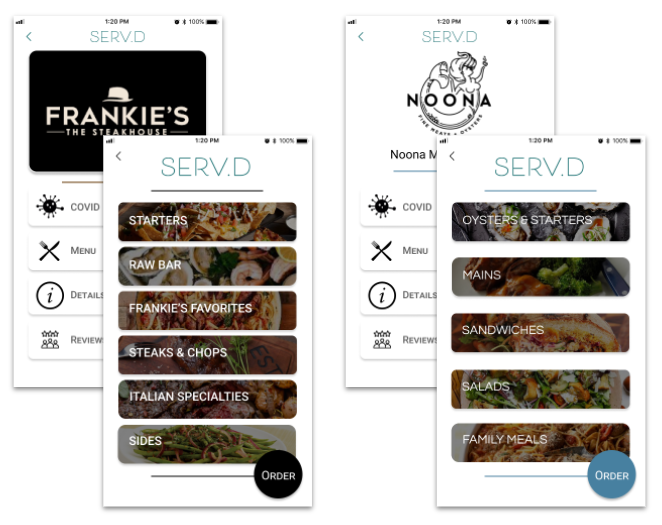
Each restaurant will be able to customize their typefaces and menu images; here are some examples of what those customizations might look like.
